Nutrient upwellings help oysters flourish in oceanic bays

South Australia has 4,000 km of coastline and an extremely valuable marine environment that is internationally renowned for its production of premium-quality seafood. The aquaculture industry in this region has developed very rapidly over the last decade. Oyster aquaculture, in particular, is a major contributor to both the seafood industry and the economy of South Australia.
The first attempts to cultivate oysters in South Australia can be traced to work in 1910-1912 with native flat oysters (Ostrea angasi). However, the introduction of Pacific oysters (Crassostrea gigas) has resulted in significant expansion in production and potential farming areas in South Australia.
Industry development
Although Pacific oyster farming was started in the 1960s, the oyster industry moved toward significant production in the early 1990s. In 1989, a group of Eyre Peninsula oyster farmers who saw a growing need for a collaborative approach toward farm management established the South Australian Oyster Growers Association (SAOGA). SAOGA initially attracted a membership of approximately 40 license holders. At present, SAOGA’s membership involves nearly all oyster license holders in South Australia.
To keep the oyster industry competitive and dynamic, the South Australian Oyster Research Council was established with a board consisting of licensed growers and SAOGA as the sole shareholder in 1999. The council’s core function is to promote and coordinate research and development for the South Australia oyster industry.
Moreover, in 1991, the industry undertook an environmental monitoring program with South Australia Research and Development Institute to evaluate the area surrounding oyster farms that continues today. South Australia’s oyster industry has become a highly productive and economically and environmentally sustainable industry.
Unique farm environment
In South Australia, the marine environment has a temperature fluctuation of 11-37 degrees C and no freshwater input via river systems. Hence, the farming environment is quite different from other oyster grow-out areas in Australia and the rest of the world.
In earlier years, the culture of native oysters was instigated by poor catch rates and an attempt to restock natural populations, but farming was not successful due to poor spat survival. South Australia’s industry is now totally reliant on hatchery-produced seed, as wild Pacific oysters are uncommon and spatfall is almost nonexistent.
However, the natural upwellings of nutrients from the ocean assist in providing the right conditions for farmed oysters to flourish. South Australian oysters are grown in oceanic bays from Ceduna in the far west of the state to Smoky Bay, Streaky Bay, Coffin Bay and Cowell. New areas are also opening up, with an emerging industry on the Yorke Peninsula at Port Broughton, Port Vincent, Stansbury and Coobowie Bay, as well as Kangaroo Island.
Culture methods

Oysters are principally cultivated in the intertidal range of the water column, which exposes them to air at low tide. At present, line culture is the most common culture technique employed in South Australia. Oysters are maintained in plastic baskets referred to as units and suspended by rubber slings on a system of wooden racks that lie parallel to the soft substratum below. The advantages of rack systems include relatively low construction and maintenance costs, faster growth, and easy access. Some farmers specialize in nursery culture and others in finishing oysters to market size.
A local hatchery established on Eyre Peninsula in the mid-1990s supplements the supply of seed from Tasmania. Most oysters produced are from improved breeding lines and their hybrids. In addition, triploid status is considered an important advantage for out-of-season marketing of oysters in the reproductive season, when diploids are spawned out and have thin meats.
Usually, oysters are graded several times before they are sold to minimize parasite settlement and maximize growth opportunities. To satisfy the exacting demands of customers, South Australia oysters are graded for sale as bistro, plate, standard, large, or jumbo. The suitability of Pacific oysters for cultivation in South Australia is evident from the relatively short 18-24 months required for grow-out to marketable size.
Production
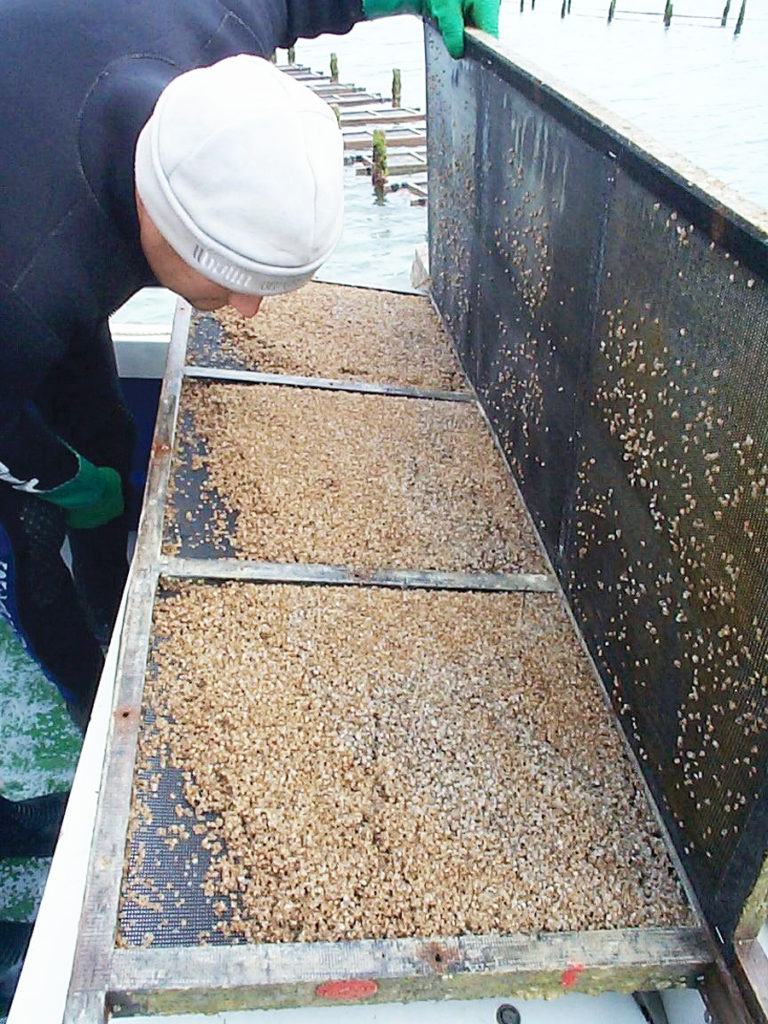
With about 44 percent of the oyster production in Australia in 2005-2006, South Australia displaced New South Wales as the top oyster-farming region. After a decline in 2004-2005, about U.S. $28.9 million (AUD $32.5 million) of Pacific oysters were raised in South Australia in 2005-2006 (Fig. 1). Currently, oyster production accounts for 32 percent of the total aquaculture production in South Australia – a figure that is expected to increase.
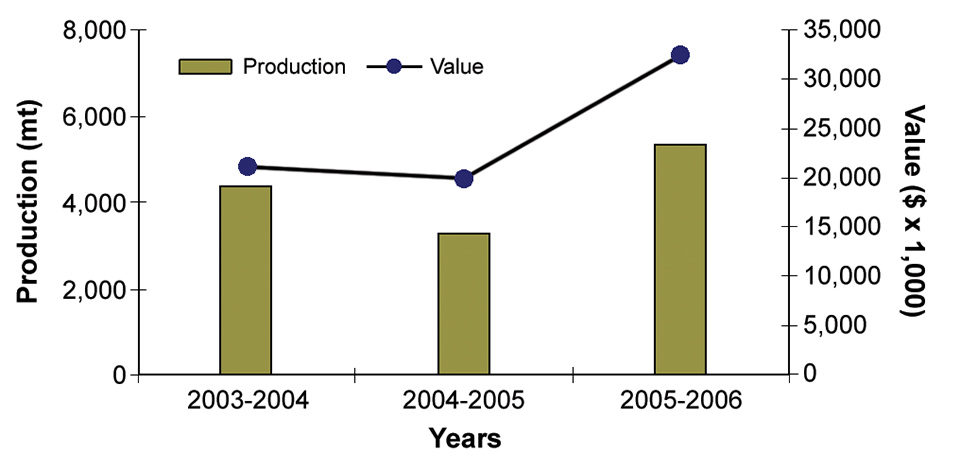
Exports
As South Australia’s oyster industry is keen to expand its markets by increasing exports, the South Australian Shellfish Quality Assurance Program has been applied to all oyster-growing areas in the region to meet the standards set by the United States Food and Drug Administration. The program provides public health protection for consumers and also benefits potential exports to otherwise restrictive overseas markets.
In 1998, the industry secured a deal to supply 1,000 dozen live oysters per week to Japan over 14 months, which was considered the beginning of exports for South Australia’s farmers. In the past three years, export production exceeded 40 metric tons (MT). The 2004-2005 volume rose over 65 percent from the 2003-2004 figure (Fig. 2). However, it only accounted for 3.1 percent of South Australia’s oyster market.
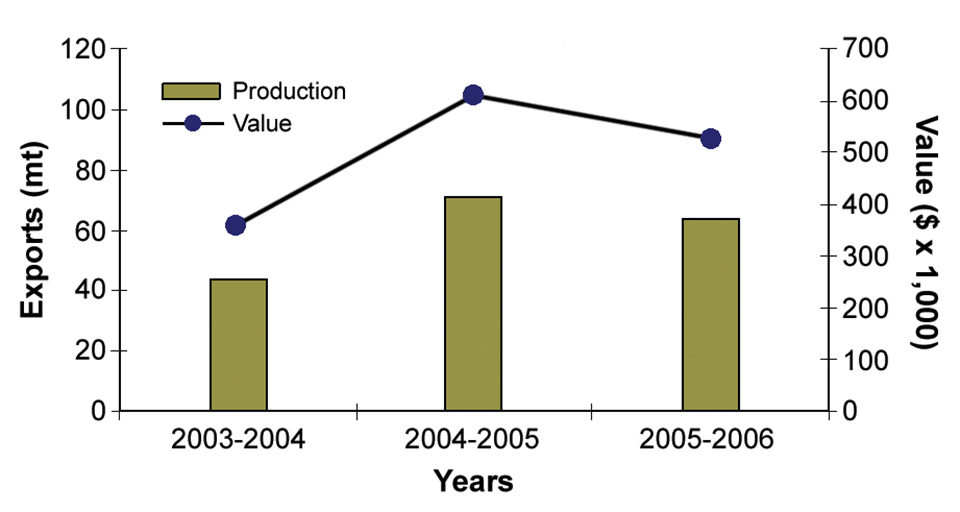
The South Australia industry recently attempted to market oysters according to meat quality by three grades: export (top grade), premium, and thrifty. Thus, it could further expand exports and improve the local market value of oysters.
Support for expansion
Demand for South Australia oysters currently exceeds supply, so the majority of oysters are presold through agreements facilitated by marketing cooperatives. In South Australia, there is still plenty of room for Pacific oyster cultivation to expand using subtidal longlines in 5- to 15-m depths.
Further exploration of potential markets is a big challenge. In 2007, the federal government launched a $135 million Australian Seafood Cooperative Research Centre (CRC) to improve the industry’s profitability, competitiveness, and robustness through a range of programs.
Over a 10-year period, the CRC intends to directly and indirectly add more than $2.4 billion to the Australian economy. At the same time, the Seafood CRC Oyster Consortium – of which the South Australia oyster industry is a member – has been formed to ensure the national oyster industry is a core participant in the center ventures.
(Editor’s Note: This article was originally published in the November/December 2007 print edition of the Global Aquaculture Advocate.)
Now that you've reached the end of the article ...
… please consider supporting GSA’s mission to advance responsible seafood practices through education, advocacy and third-party assurances. The Advocate aims to document the evolution of responsible seafood practices and share the expansive knowledge of our vast network of contributors.
By becoming a Global Seafood Alliance member, you’re ensuring that all of the pre-competitive work we do through member benefits, resources and events can continue. Individual membership costs just $50 a year.
Not a GSA member? Join us.
Author
-
Yan Li, Ph.D.
School of Biological Sciences
Flinders University of South Australia
GPO Box 2100
Adelaide, Australia 5001[117,97,46,117,100,101,46,115,114,101,100,110,105,108,102,64,105,108,46,121]
Related Posts
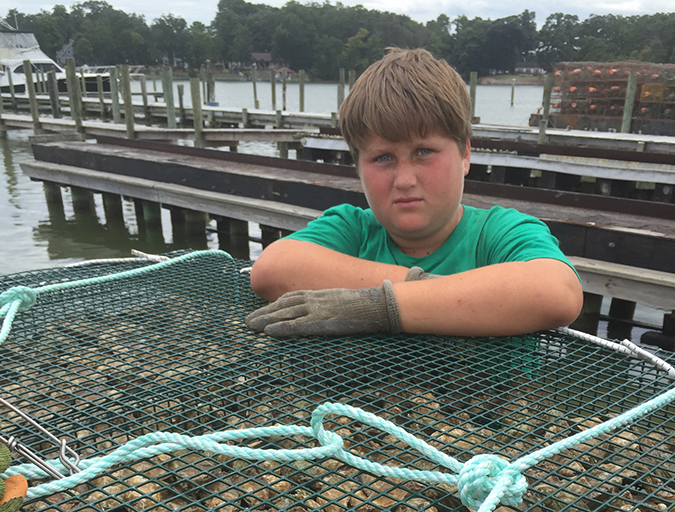
Responsibility
Ailing waterways hail the oyster’s return
The Lower Hudson Estuary and Chesapeake Bay, two waterways once home to thriving oyster beds, would welcome the shellfish’s return. Aquaculture initiatives in both areas aim to reinvigorate the water and the communities they support.
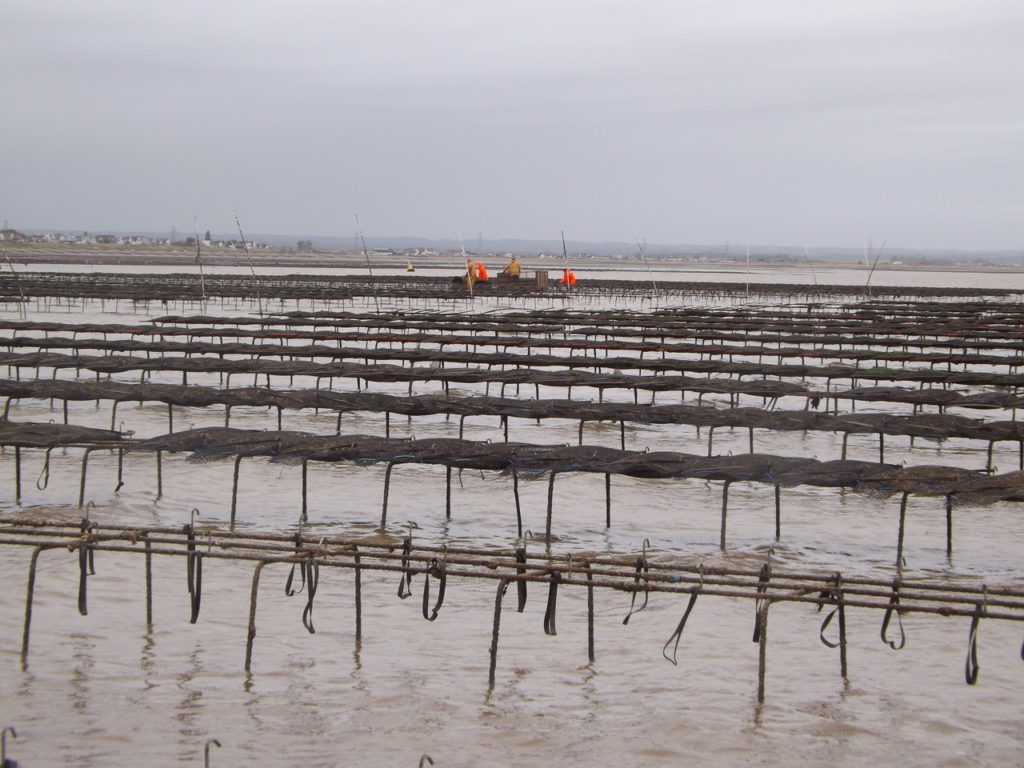
Intelligence
Aquaculture has put the oysters back in Oyster Town
Whitstable Oyster Fishery Co. aims to safeguard the English town’s rich oyster tradition. Farming triploid oysters on racks in intertidal zones has made a "massive difference," says the company's managing director.

Responsibility
A look at various intensive shrimp farming systems in Asia
The impact of diseases led some Asian shrimp farming countries to develop biofloc and recirculation aquaculture system (RAS) production technologies. Treating incoming water for culture operations and wastewater treatment are biosecurity measures for disease prevention and control.
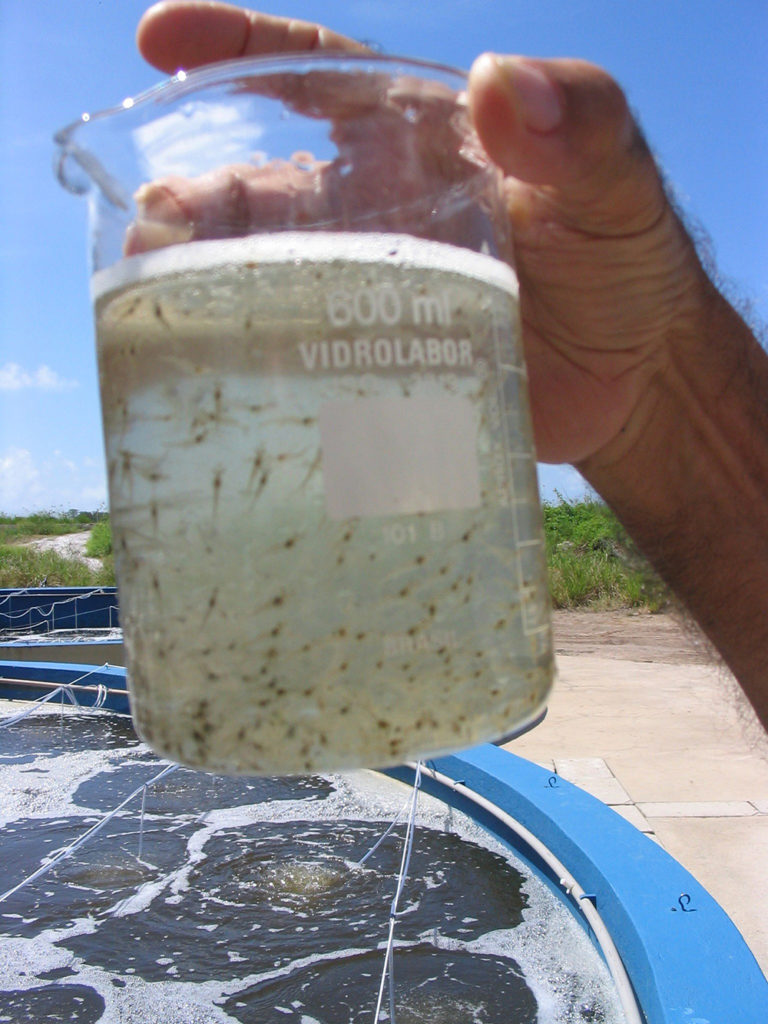
Health & Welfare
A study of Zoea-2 Syndrome in hatcheries in India, part 2
Indian shrimp hatcheries have experienced larval mortality in the zoea-2 stage, with molt deterioration and resulting in heavy mortality. Authors considered biotic and abiotic factors. Part 2 describes results of their study.


